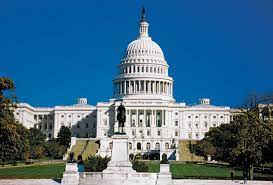S&P 500: +2.91% DOW: +3.69% NASDAQ: +3.69% 10-YR Yield: 4.62%
What Happened?
The stock market recorded its best week since the November “Trump bump,” fueled by muted inflation data, strong U.S. growth projections, and robust corporate earnings. For the week, the Dow Jones Industrial Average rose 3.7%, the S&P 500 gained 2.9%, and the Nasdaq Composite advanced 2.4%. Gains were broad-based, with technology, financials, energy, and manufacturing leading the charge. Technology stocks, particularly the Magnificent Seven and semiconductor companies like Nvidia and AMD, posted significant gains amid optimism surrounding AI and demand for advanced computing. Financials benefited from strong earnings reports, with big banks like Goldman Sachs reaching all-time highs. Oil prices rose for the fourth consecutive week, closing at $77.88 per barrel, driving gains in the energy sector. Meanwhile, manufacturers saw stable demand, adding to the week’s positive momentum.
Not all sectors fared equally, however. Utilities and real estate underperformed as rising yields shifted investor attention toward higher-growth areas like technology and financials. Despite this divergence, consumer staples remained stable, with concerns lingering about cost pressures from potential tariffs and inflation. Overseas markets also participated in the rally, with Chinese equities edging higher on news of 5% GDP growth supported by continued stimulus. European markets hit record highs, led by the U.K.’s FTSE 100 and Germany’s DAX index, despite disappointing retail sales data in the U.K.
Bitcoin surged to $104,767, its highest level in a month, ahead of President-elect Trump’s inauguration, while oil markets rallied on expectations of increased U.S. sanctions under the incoming administration. While optimism is high, economic uncertainties remain. Inflationary risks from potential tariffs and fiscal policies loom large, and markets remain cautious about the implications of new immigration restrictions and heightened trade tensions. As markets pause Monday for Martin Luther King Jr. Day, which coincides with Inauguration Day, investors are preparing for potential policy shifts under the new administration and their effects on growth, inflation, and market dynamics.

Core Inflation Rate Slows To 3.2% In December, Less Than Expected
- The consumer price index increased a seasonally adjusted 0.4% on the month, putting the 12-month inflation rate at 2.9%. The annual number was in line with forecasts.
- Core CPI annual rate was 3.2%, a notch down from the month before and slightly better than the 3.3% outlook.
- Shelter prices, which comprise about one-third of the CPI weighting, rose by 0.3% but were up 4.6% from a year ago, the smallest one-year gain since January 2022.
The key takeaway – December’s inflation report painted a nuanced picture of the U.S. economy. Headline CPI rose 2.9% year-over-year, driven largely by a 4.4% jump in gas prices, while core CPI, which excludes food and energy, edged down to 3.2% from 3.3%, offering some relief to markets. Investors welcomed signs of moderating inflation, pushing stocks higher, but the Federal Reserve is unlikely to cut interest rates soon as it remains focused on potential inflationary pressures from President-elect Trump’s proposed policies, including tariffs, tax cuts, and immigration restrictions.
Inflation has cooled significantly from its June 2022 peak of 9%, but the decline has been uneven, with sticky categories like housing and labor shortages continuing to exert upward pressure. Fed policymakers have raised their 2025 inflation forecast, reflecting these persistent challenges. While the Fed is expected to hold rates steady for now, significant rate cuts are unlikely in 2025 as officials weigh the impact of policy changes and prioritize long-term economic stability amid ongoing uncertainty.

US Retail Sales Exit 2024 With Momentum; Labor Market On Solid Ground
- Retail sales increase 0.4% in December
- Core retail sales jump 0.7%; November data unrevised
- Weekly jobless claims rise 14,000 to 217,000
- Continuing claims decrease 18,000 to 1.859 million
The key takeaway – U.S. retail sales continued to demonstrate resilience in December, rising a seasonally adjusted 0.4% month-over-month , according to the Commerce Department. While slightly below economists’ 0.5% forecast, November’s retail sales growth was revised upward to 0.8%, highlighting stronger consumer spending momentum. Excluding motor vehicles and parts, retail sales also grew 0.4%, in line with expectations.
Over the course of 2024, retail sales rose 3% year-over-year, reflecting solid consumer demand despite elevated interest rates. Key contributors included robust holiday shopping and a strong labor market, with household income growth helping offset inflationary pressures. These trends have bolstered Q4 GDP growth estimates to 2.9%, up from earlier projections of 2.7%.
While inflation remains a challenge, consumer spending, which remains the backbone of the U.S. economy, continues to support economic growth heading into 2025. However, elevated interest rates and potential policy changes, including tariffs and immigration restrictions, could temper future spending. This resilience, coupled with uncertainty about inflation and policy impacts, suggests the Federal Reserve will maintain a cautious stance, likely delaying rate cuts until the latter half of 2025. Markets will be closely monitoring how these dynamics evolve in the coming months.

U.S. Starts Maneuvers to Avoid Breaching Debt Limit, Putting Pressure on Congress
- The U.S. government has hit its $36.1 trillion debt limit, prompting the Treasury Department to prevent default
- Annual deficits are projected to remain above 5% of GDP over the next decade, with net interest expenses surpassing $1 trillion by 2026
- Real GDP growth is expected to slow to 1.9% in 2025, while inflation remains above 2%
The key takeaway – The U.S. government has reached its $36.1 trillion debt limit, triggering the Treasury Department to implement “extraordinary measures” to keep paying bills and prevent default. Treasury Secretary Janet Yellen has urged Congress to raise the borrowing cap, warning of potential financial risks. Meanwhile, the Congressional Budget Office (CBO) projects a challenging fiscal outlook, with the national debt expected to hit 99.9% of GDP this year and surpass post-World War II highs by 2029. Annual deficits are forecast to remain above 5% of GDP over the next decade, with net interest expenses exceeding $1 trillion by 2026, surpassing defense spending. Rising Treasury yields could add $2 trillion in borrowing costs over the next decade, further straining government finances. These challenges are compounded by uncertainty surrounding potential extensions of 2017 tax cuts and new fiscal policies under the incoming Trump administration.
Long-term fiscal pressures stem from the growing gap between revenue and spending, driven by aging demographics and the rising costs of Social Security and Medicare, which are projected to consume a larger share of GDP in the coming years. The fiscal year 2024 deficit is expected to reach $1.9 trillion, or 6.2% of GDP, well above historical averages. The U.S. economy is projected to grow at a slower pace, with real GDP expected to expand by 1.9% in 2025, while inflation remains above 2%. Although the U.S. benefits from its reserve-currency status and relative economic strength, the trajectory of rising debt and increasing interest expenses highlights the urgent need for comprehensive policy adjustments to address these structural challenges.
From Around the Watercooler

- Israeli Cabinet Approves Gaza Deal as Hostage Release Draws Near
- Supreme Court Upholds TikTok Ban, But Trump Might Offer Lifeline
- Displaced Los Angeles Homeowners Face Price Gouging After Wildfires
- Freezing Temperatures Create Logistical Mess for Trump Inauguration

